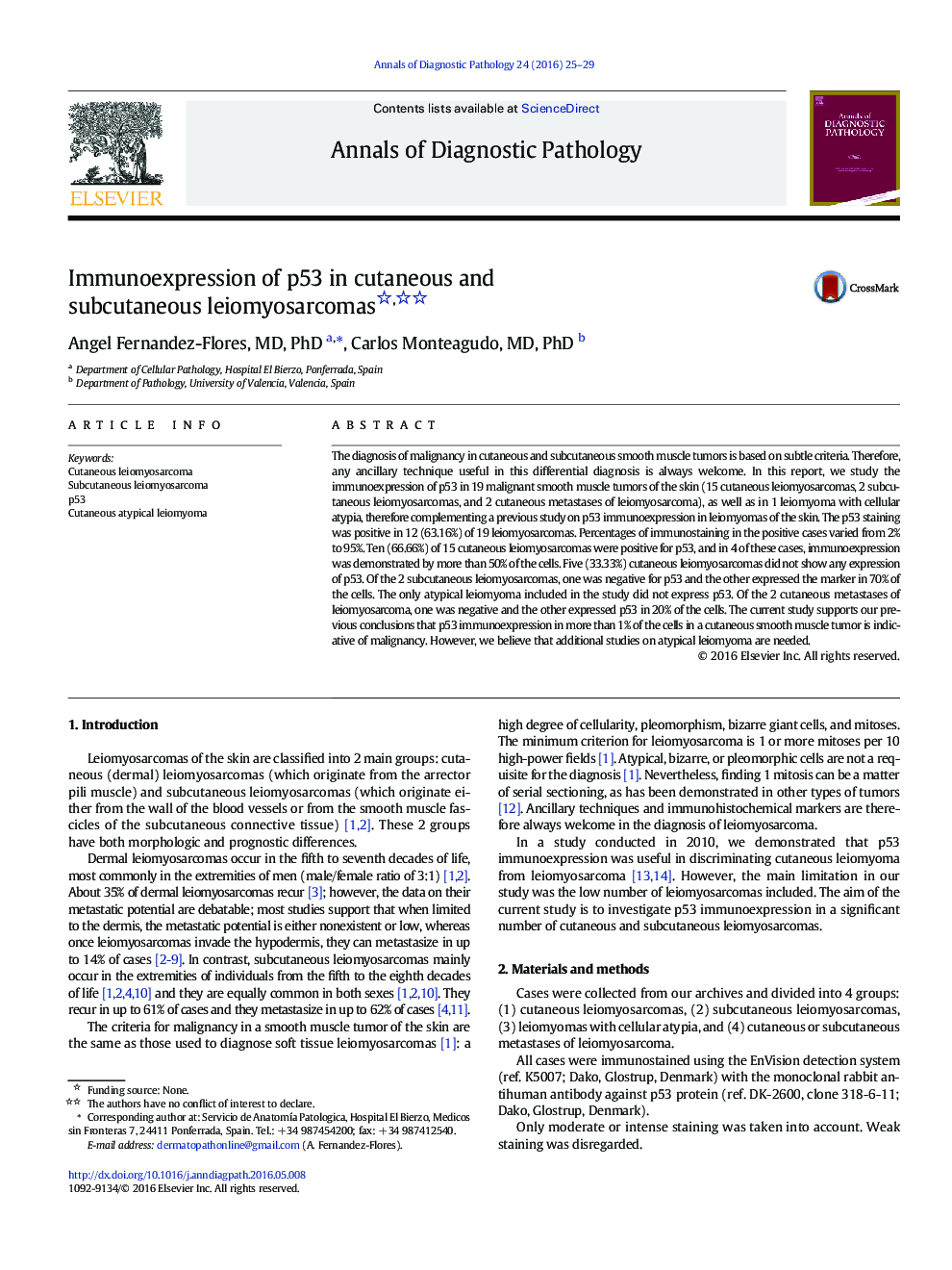| Article ID | Journal | Published Year | Pages | File Type |
|---|---|---|---|---|
| 4129684 | Annals of Diagnostic Pathology | 2016 | 5 Pages |
The diagnosis of malignancy in cutaneous and subcutaneous smooth muscle tumors is based on subtle criteria. Therefore, any ancillary technique useful in this differential diagnosis is always welcome. In this report, we study the immunoexpression of p53 in 19 malignant smooth muscle tumors of the skin (15 cutaneous leiomyosarcomas, 2 subcutaneous leiomyosarcomas, and 2 cutaneous metastases of leiomyosarcoma), as well as in 1 leiomyoma with cellular atypia, therefore complementing a previous study on p53 immunoexpression in leiomyomas of the skin. The p53 staining was positive in 12 (63.16%) of 19 leiomyosarcomas. Percentages of immunostaining in the positive cases varied from 2% to 95%. Ten (66.66%) of 15 cutaneous leiomyosarcomas were positive for p53, and in 4 of these cases, immunoexpression was demonstrated by more than 50% of the cells. Five (33.33%) cutaneous leiomyosarcomas did not show any expression of p53. Of the 2 subcutaneous leiomyosarcomas, one was negative for p53 and the other expressed the marker in 70% of the cells. The only atypical leiomyoma included in the study did not express p53. Of the 2 cutaneous metastases of leiomyosarcoma, one was negative and the other expressed p53 in 20% of the cells. The current study supports our previous conclusions that p53 immunoexpression in more than 1% of the cells in a cutaneous smooth muscle tumor is indicative of malignancy. However, we believe that additional studies on atypical leiomyoma are needed.
